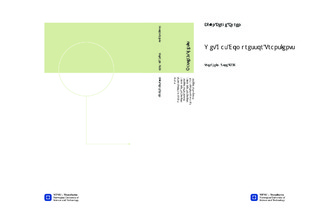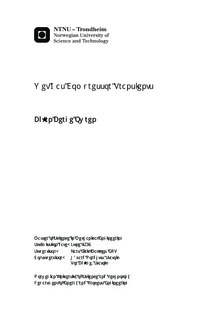| dc.contributor.advisor | Bakken, Lars Eirik | nb_NO |
| dc.contributor.advisor | Nordhus, Håvard | nb_NO |
| dc.contributor.advisor | Bjørge, Tor | nb_NO |
| dc.contributor.author | Owren, Bjørn Berge | nb_NO |
| dc.date.accessioned | 2014-12-19T11:52:28Z | |
| dc.date.available | 2014-12-19T11:52:28Z | |
| dc.date.created | 2014-09-12 | nb_NO |
| dc.date.issued | 2014 | nb_NO |
| dc.identifier | 746555 | nb_NO |
| dc.identifier | ntnudaim:11912 | nb_NO |
| dc.identifier.uri | http://hdl.handle.net/11250/235673 | |
| dc.description.abstract | This master thesis considers three subtasks related to transient operation of wet gas compressors.HYSYS Dynamics is used to establish a dynamic simulation model in the first subtask. The model is designed to predict transient behavior of the compressor test facility at NTNU during dry and wet gas trip scenarios. Its steady state performance has been validated against test data. The deviation of polytropic head and suction volume flow is less than 1% for all test points but one.Dry and wet gas model performance during trip is validated in the second subtask. The deviation is evaluated in terms of rotational speed, polytropic head and suction volume flow. Minimal deviation is observed for rotational speed.The polytropic head prediction deviates up to 7.21% compared to values calculated from test data. The deviation is partly due to consistent offset between the predicted and calculated curves. Curve fitting is expected to significantly reduce the polytropic head deviation.The predicted suction volume flow deviates severely from the values based on test data. This is also evident during the first seconds of trip, which is unfortunate in terms of surge behavior prediction. The maximum deviation is 8.68%The last subtask considers deviation between dry and wet compressor behavior during a representative transient operating scenario. It was decided to investigate compressor response during speed ramp-up from 9 000 rpm to 11 000 rpm for dry and wet gas. The scenarios are also performed in the lab facility.The simulations suggest a slower increase in rotational speed for wet gas compared to dry gas. This is not confirmed by test results which indicate no difference between wet and dry gas. The dynamic model is not able to accurately predict the transient behavior of the compressor test facility during speed ramp-up. | nb_NO |
| dc.language | eng | nb_NO |
| dc.publisher | Institutt for energi- og prosessteknikk | nb_NO |
| dc.title | Wet Gas Compressor Transients | nb_NO |
| dc.type | Master thesis | nb_NO |
| dc.source.pagenumber | 136 | nb_NO |
| dc.contributor.department | Norges teknisk-naturvitenskapelige universitet, Fakultet for ingeniørvitenskap og teknologi, Institutt for energi- og prosessteknikk | nb_NO |

